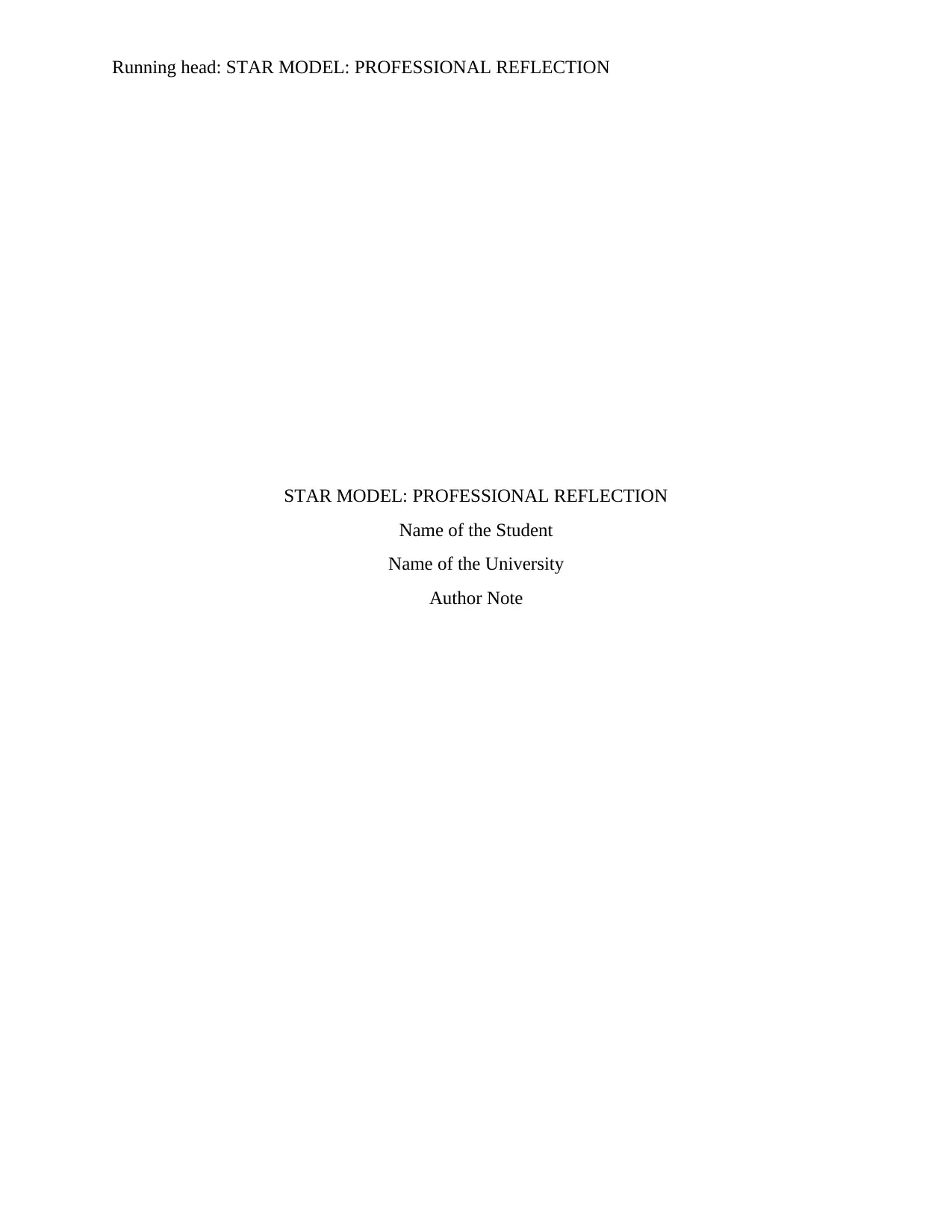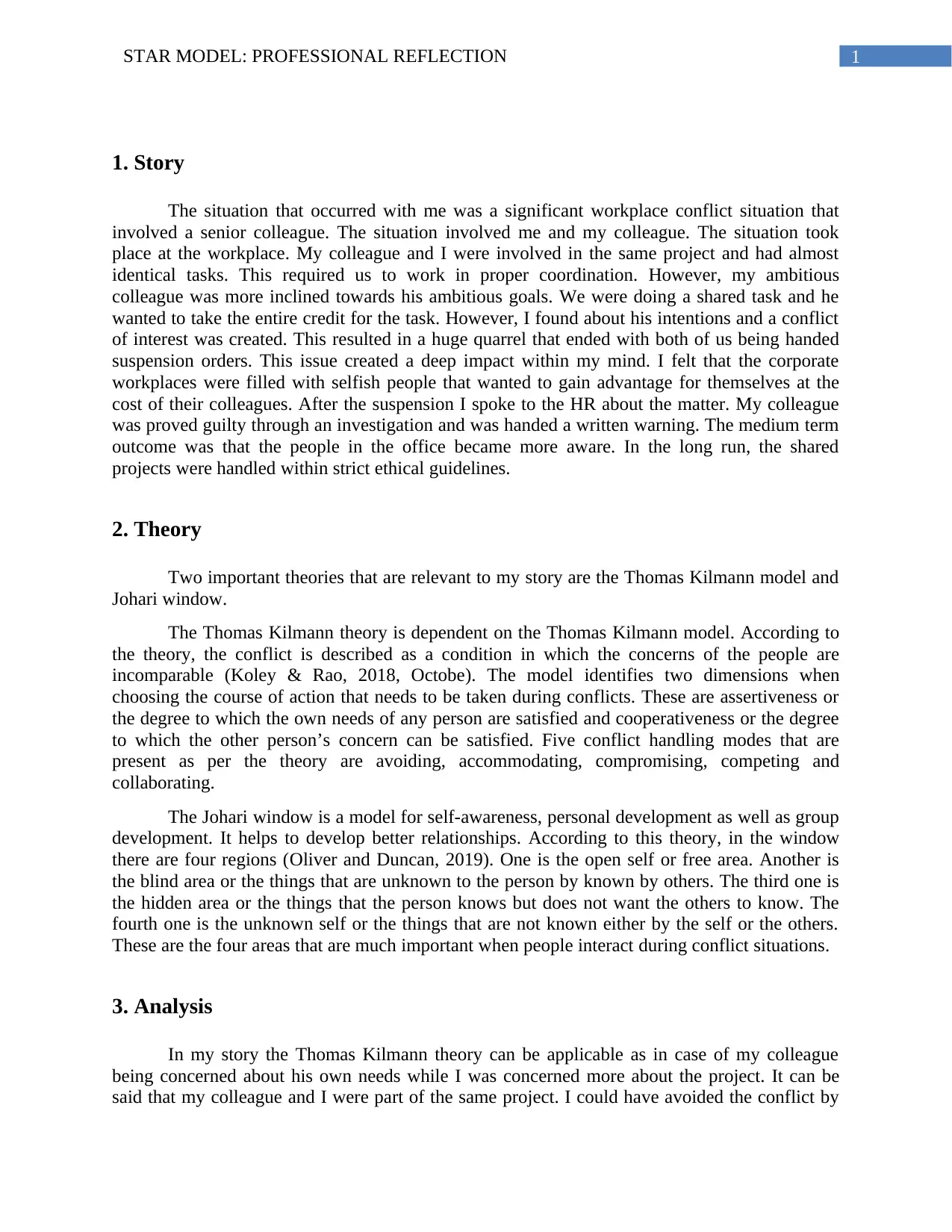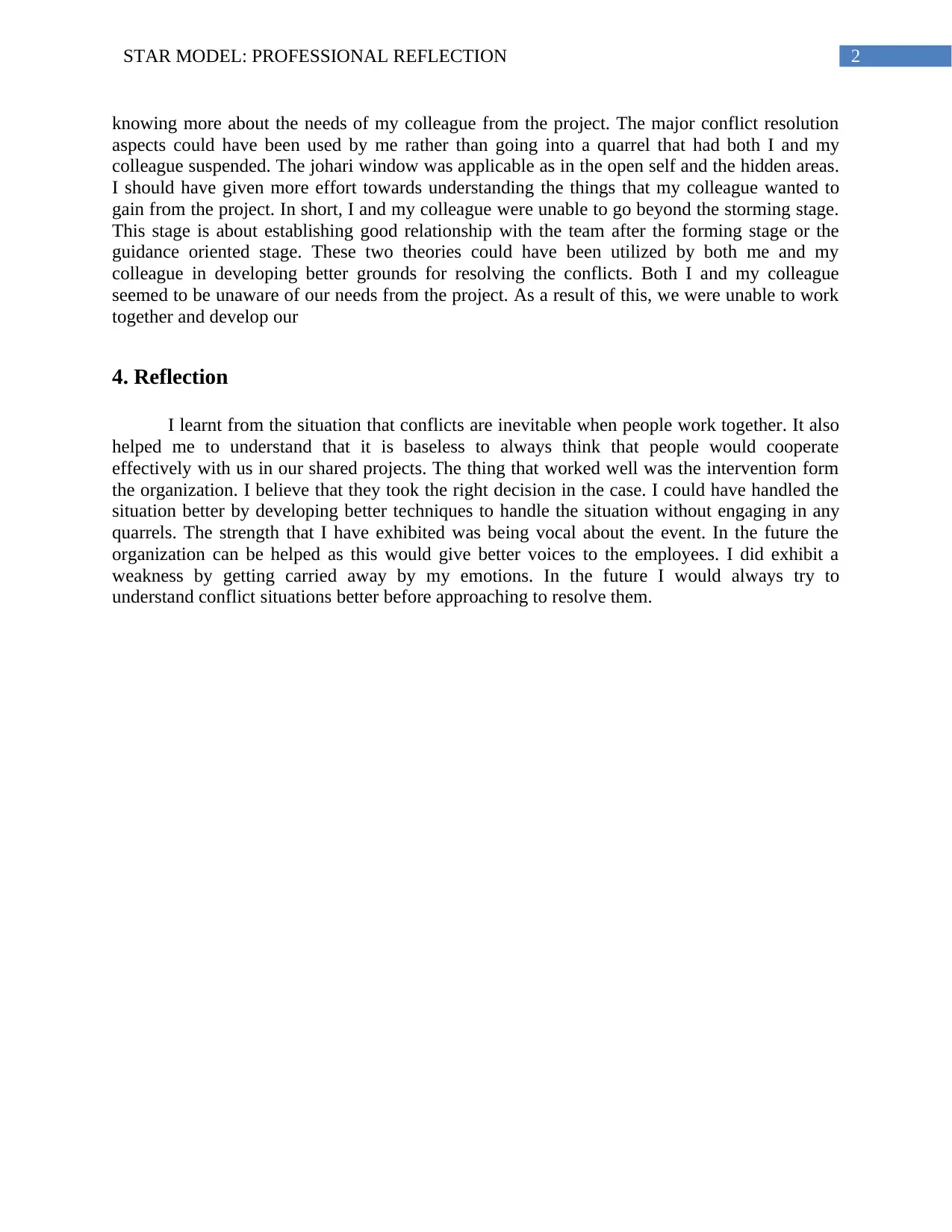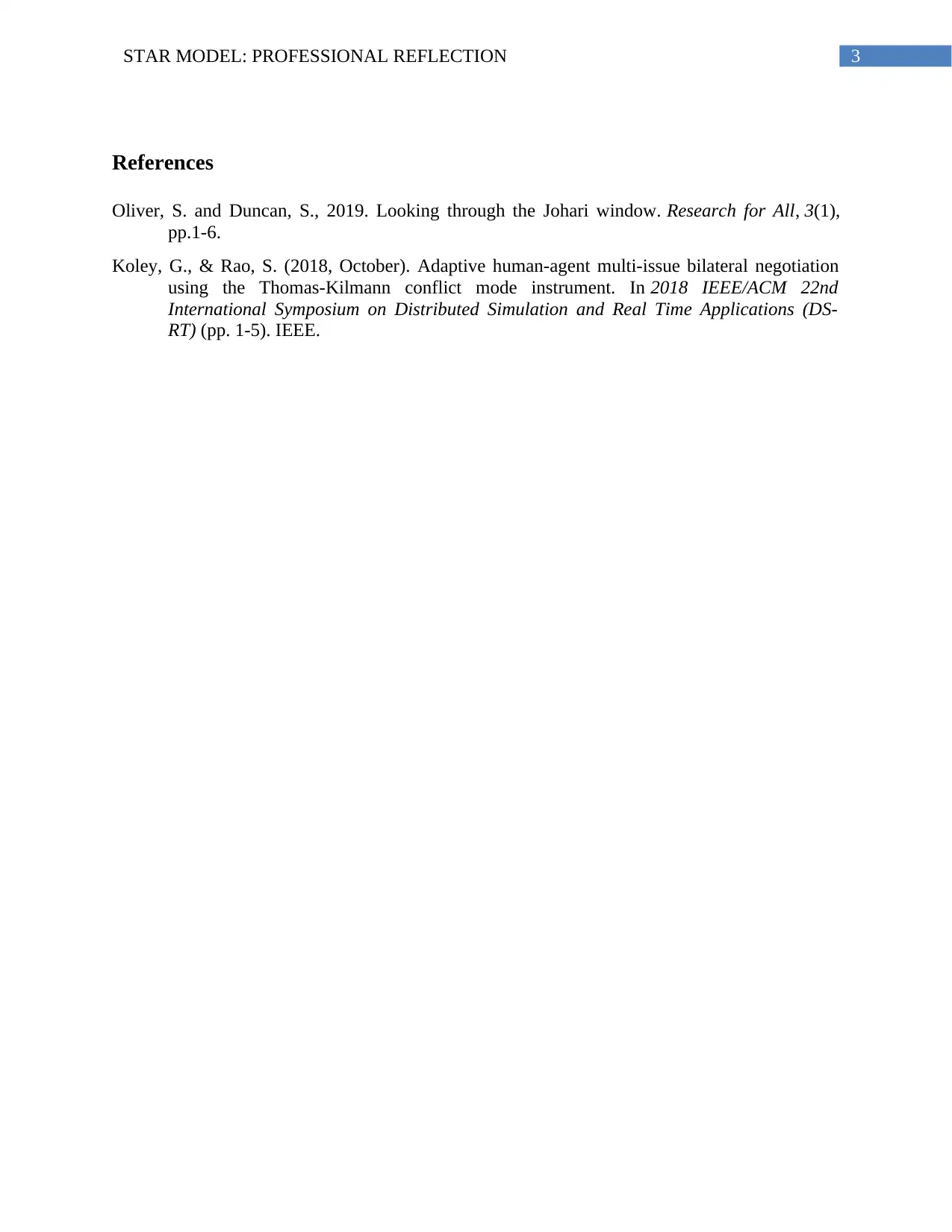University Reflection: STAR Model of Workplace Conflict
VerifiedAdded on 2022/08/13
|4
|969
|14
Homework Assignment
AI Summary
This assignment presents a student's professional reflection utilizing the STAR model to analyze a workplace conflict. The reflection details a situation involving a disagreement with a colleague over project credit, leading to a suspension. The student applies the Thomas Kilmann model and the Johari window to analyze the conflict, exploring conflict handling modes and self-awareness. The analysis examines how these theories could have been utilized to resolve the conflict more effectively. The reflection concludes with lessons learned, emphasizing the inevitability of conflicts and the importance of emotional control and organizational intervention. The student highlights both strengths, such as vocalizing concerns, and weaknesses, such as emotional reactions, providing insights for future conflict resolution strategies.
1 out of 4










![[object Object]](/_next/static/media/star-bottom.7253800d.svg)